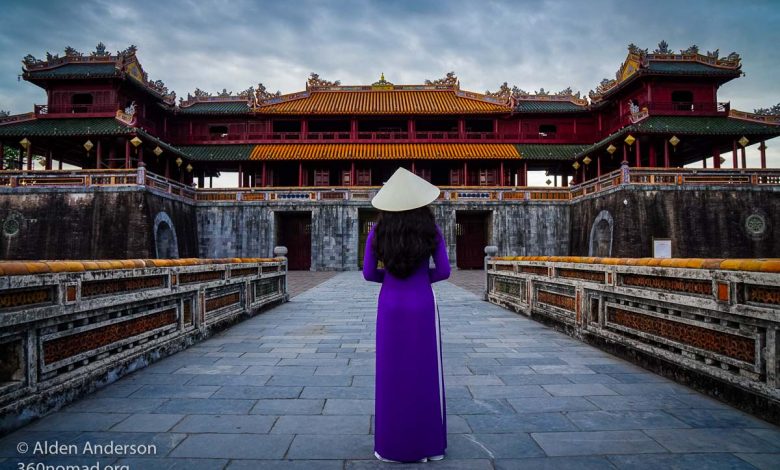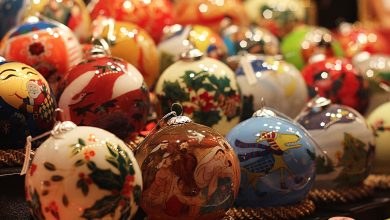Is the Imperial City of Hue Worth Exploring for History Lovers?

For travelers with a passion for history, few places in Vietnam offer a richer, more immersive experience than the Imperial City of Hue. Tucked in the heart of central Vietnam, this former royal capital is a place where the past comes alive through crumbling citadels, ornate temples, royal tombs, and ancient pagodas. But is it truly worth a visit for history buffs in today’s fast-evolving travel landscape?
Absolutely.
In fact, the Imperial City of Hue is one of Southeast Asia’s most underappreciated historical gems. While cities like Hanoi and Ho Chi Minh City often steal the spotlight, Hue quietly offers a more focused and culturally rich encounter that feels like stepping back in time—without sacrificing modern-day comforts. Let’s dive into why this city remains a must-visit destination for history lovers.
What Makes Hue’s Imperial City So Historically Significant?
The Imperial City of Hue was once the political, cultural, and religious center of Vietnam under the Nguyen Dynasty—the last ruling dynasty of the country. Constructed in the early 19th century, the complex was inspired by Beijing’s Forbidden City and was home to emperors, mandarins, and royal guards.
Although heavily bombed during the Vietnam War, the site still retains a remarkable amount of its original grandeur. Restoration projects over the last decade have breathed new life into many structures, allowing visitors to witness the opulence and complexity of imperial Vietnamese architecture.
Walking through the vast citadel and Forbidden Purple City (once reserved exclusively for the royal family) is more than just sightseeing—it’s an intimate journey into the pages of Vietnamese history.
Is Hue Only About the Citadel?
Not at all. While the Imperial Citadel is the centerpiece, Hue’s historical offerings extend far beyond its ancient walls. Scattered around the city and along the Perfume River are the stunning tombs of Nguyen emperors. Each tomb is a blend of spiritual symbolism, Confucian principles, and artistic mastery.
For instance:
- Tomb of Khai Dinh: This site impresses with its European and Vietnamese fusion architecture, intricately detailed mosaics, and imperial grandeur.
- Tomb of Tu Duc: Set in a peaceful pine forest, this tomb reflects a poetic and philosophical emperor who left behind a legacy of literature and art.
Additionally, landmarks like Thien Mu Pagoda, the oldest pagoda in Hue, and the Thanh Toan Bridge, a centuries-old wooden footbridge, offer deeper insight into Vietnam’s cultural and spiritual history.
Can You Experience Local Culture While Exploring Hue?
Absolutely, and it’s one of the best parts of visiting this historic city.
Hue isn’t a museum frozen in time—it’s a living, breathing city with proud traditions. As you wander through markets like Dong Ba, you’ll find a vibrant blend of local handicrafts, street food, and everyday Vietnamese life. Culinary traditions in Hue are especially unique. The city is famous for its imperial cuisine, including dishes that were once served exclusively to royalty.
Try specialties such as:
- Bun Bo Hue – a spicy beef noodle soup that rivals even Pho in popularity.
- Banh Beo – delicate steamed rice cakes topped with shrimp and crispy shallots.
- Nem Lui – lemongrass skewers of grilled pork, served with rice paper and fresh herbs.
To deepen the cultural experience, many Vietnam travel packages include a visit to traditional garden houses or opportunities to join cooking classes and craft workshops led by local artisans.
How Easy Is It to Visit the Imperial City of Hue?
Traveling to Hue is straightforward, especially if you’re booking through a trusted Vietnam tour agency. The city has its own airport (Phu Bai International Airport), and it’s well-connected by rail and road from Da Nang and Hoi An.
For travelers who value seamless planning, tour agencies often provide guided visits, including transportation, entrance tickets, and knowledgeable guides who can explain the intricate symbolism behind the citadel’s design or the poetic legacy of its emperors.
Whether you’re a solo adventurer or part of a group, having a curated itinerary can help you maximize your time and ensure you don’t miss the lesser-known but equally fascinating corners of the city.
Is Hue Worth It Compared to Other Destinations in Vietnam?
Each Vietnamese destination offers its own flavor—Hanoi delivers bustle and history, Hoi An enchants with lantern-lit charm, and Ho Chi Minh City stuns with its energy. But Hue stands alone as the heart of royal Vietnam.
For travelers particularly interested in:
- Imperial history
- Traditional Vietnamese architecture
- Cultural depth and spirituality
Hue delivers in a way no other city does.
Moreover, because it’s often less crowded than the more commercial destinations, you get the luxury of experiencing history without the chaos of mass tourism.
Many Vietnam travel packages now offer combinations like “Hue – Da Nang – Hoi An,” which is perfect for travelers looking to blend culture, beach time, and historic exploration in one seamless itinerary.
Frequently Asked Questions (FAQs)
Q1: How much time should I spend in Hue to explore its historical attractions?
A minimum of two days is recommended to fully explore the Imperial Citadel, tombs, pagodas, and nearby cultural attractions. With three days, you’ll also have time to enjoy local food experiences and possibly take a boat ride on the Perfume River.
Q2: Is the Imperial City of Hue family-friendly for those traveling with kids?
Yes, it can be a great educational experience for children. The large open spaces, colorful structures, and storytelling by local guides can keep kids engaged. Just be sure to bring sun protection and water, as it can get hot during the day.
Q3: What is the best time of year to visit Hue?
Spring and early summer are ideal (from March to June), offering pleasant weather and blooming gardens. Late summer and fall are also good but may be rainier. Avoid peak monsoon season (October to December) as heavy rains can affect travel plans.
Q4: Is it possible to hire a guide at the Imperial City entrance?
Yes, local guides are usually available at the entrance, offering English-speaking tours at reasonable prices. However, many visitors opt to book through a Vietnam tour agency in advance for more reliable service and better value.
Q5: Can I visit Hue as a day trip from Da Nang or Hoi An?
Technically yes, but it would be rushed. The drive from Da Nang to Hue takes around 2.5 to 3 hours each way. To truly enjoy the city’s charm and historical depth, staying at least one night is highly recommended.
Final Thoughts
For history lovers, the Imperial City of Hue isn’t just worth visiting—it’s an essential stop. With its meticulously restored palaces, royal tombs, and ancient pagodas, Hue offers a deep dive into Vietnam’s regal past while staying connected to the vibrant culture of today.
Whether you’re a solo traveler with a curiosity for dynastic stories or a family looking for enriching experiences, Hue delivers a journey that’s both educational and deeply rewarding. When choosing among the many Vietnam travel packages, make sure Hue is part of your itinerary—and consider working with a reputable Vietnam tour agency to make the most of your time in this majestic city.




